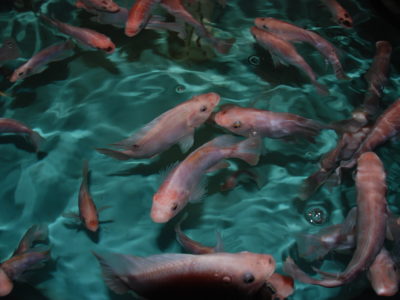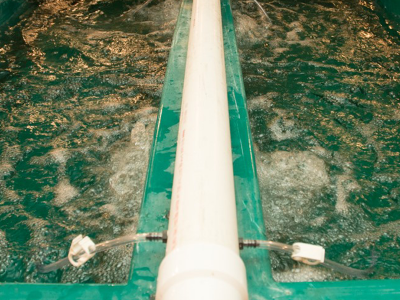Land-Based Aquaculture: Hurdles and Business Planning Practices
12-12-2016 in Aquaculture
Increasing global demand for seafood has prompted many Iowa farmers to explore land-based aquaculture as a profitable and sustainable venture to grow and diversify the family farm. Several hog barns and school buildings across the state have already been converted to fish farming facilities, but while food fish and shrimp remains a big driver for expansion within the aquaculture industry, there a host of hurdles and business planning steps to tackle.
According to Bill Lynch, president of the Ohio Aquaculture Association and keynote speaker at the Coalition to Support Iowa’s Farmers (CSIF) recent Aquaculture Conference, small family farms may not be well positioned to take full advantage of this expanding market alone.
“Small farms don’t have the critical mass to meet client needs at this point,” said Lynch. “And many family farms cannot realize the economy of scale in terms of costs.”
Other barriers for small fish farms include becoming HACP certified for processing purposes, gaining access to high quality fingerlings and drumming up business through market development. Despite these challenges, Lynch says there is a solution.
“There’s no need for each aquaculturist to reinvent the wheel,” said Lynch. “These small fish farms really need to aggregate together, even with the larger farms, to create a well-functioning cooperative.”
Cooperatives can address multiple market impediments in terms of minimizing costs and maximizing sales. One of the major advantages of working in this model includes reducing input costs through collective purchasing power. Working together, small fish farms can pool their risk and financial resources to conduct business activities they would not be able to achieve independently.
Other benefits of the cooperative model include obtaining access to services such as processing equipment and transportation, and increasing sales through collaborative marketing and sales of high quality aquatic products.
“Ultimately, an aquaculture cooperative has the potential to increase farmers’ profitability while supporting the locally grown movement in providing a high quality product from farm to fork,” said Lynch.
Basic Business Planning
Although an aquaculture cooperative system has not yet been established in Iowa, aquaculture producers in the state can follow several best business practices to ensure the viability of their individual fish farms.
Dan Burden, coordinator of the Iowa State University Extension Value Added Agriculture Program, says understanding price point is pivotal to the success of any business plan.
“When developing your feasibility study you have to figure out how to come up with a price point that’s going to allow you to be competitive in the market,” Burden said. “Understand your geographic distribution area and know what your competition is.”
While aquaculture producers undoubtedly identify other fish farmers as their primary competition, Burden advises producers to think beyond their industry and consider the influence of alternative proteins such as pork and beef.
“Ask yourself how you can model your product to be appealing to consumers who are willing to pay for it,” Burden said. “If your price point is too high, nobody will want your product and you won’t be able to afford to produce it.”
Successful business planning requires vision and a strong network of supporters. That’s why entrepreneurs, including fish farmers, are encouraged to reach out to experts like the Coalition to Support Iowa’s Farmers for assistance with planning, siting and other small business considerations.
CSIF is a non-profit organization that assists livestock farmers who want help interpreting rules and regulations, guidance on good site locations for barns, counsel on enhancing neighbor relations and tips on how to protect the environment at no cost. For more information, call 1-800-932-2436 or visit www.supportfarmers.com.
The Coalition to Support Iowa’s Farmers was created by farmers to help farmers raise livestock responsibly and successfully. It’s a joint partnership involving the Iowa Cattlemen’s Association, Iowa Corn Growers Association, Iowa Egg Council, Iowa Farm Bureau Federation, Iowa Pork Producers Association, Iowa Soybean Association, Iowa Turkey Federation and Midwest Dairy Association.
-30-
Recommended News

How Aquaculture Growth in Iowa Supports Economy, Creates New Jobs for Farmers
Iowa is one of the many states benefiting from its growing aquaculture industry. According to the Iowa Department of Agriculture, aquaculture generated more than $3.8 million in sales in Iowa...
Read More
CSIF Event Showcases Iowa’s Emerging Aquaculture Industry
The 2022 Aquaculture Conference, hosted by the Coalition to Support Iowa’s Farmers (CSIF), recently drew more than 100 attendees to learn more about Iowa’s newest livestock industry.
Read More
Leading by example
WEST DES MOINES, IOWA – September 19, 2019 – Livestock production is important to Iowa’s economy, contributing $48.5 billion to the state annually, up more than $17 billion from the...
Read More